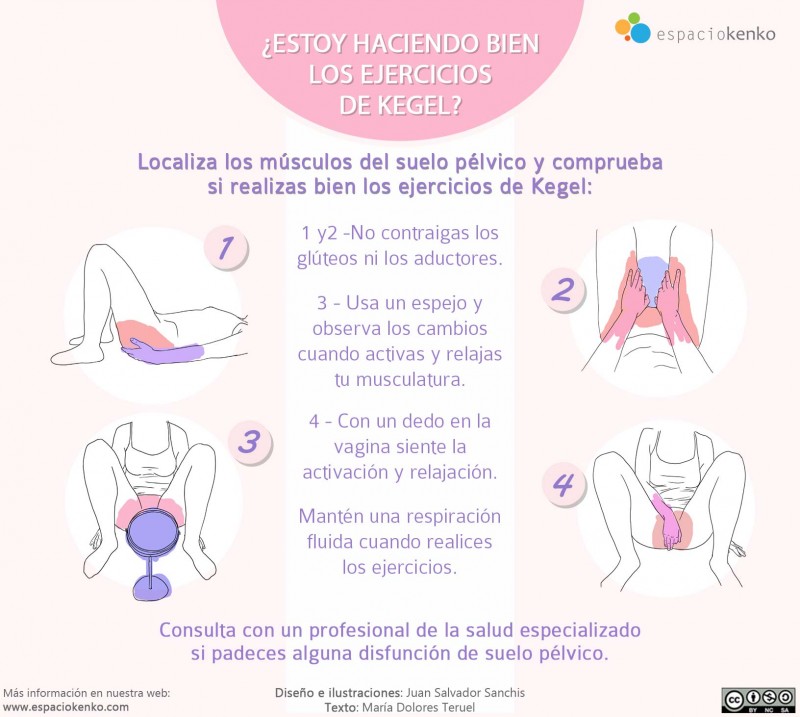Kegel exercises postpartum
Kegel Exercises During and After Pregnancy
You've heard Kegels mentioned from time to time, but just what are these exercises, and what do they do? These invisible exercises strengthen the pelvic floor muscles that help support your bladder, uterus, and rectum, and they are great to do both during and after pregnancy. Read on to learn about the benefits of Kegel exercises and how you can add them to your daily routine.
What Is Kegel Exercise?
Kegel exercise is a form of pelvic floor exercise that involves squeezing and relaxing muscles in the pelvic and genital areas. These muscles support the pelvic organs, including the bladder, uterus, small intestine, and rectum. Regular Kegel exercise during pregnancy and after you’ve given birth can help improve and maintain your bladder and bowel control by increasing the strength, endurance, and correct function of these important muscles. Kegels can be beneficial throughout life, and you might want to begin doing them during pregnancy or after your baby is born, when pelvic floor muscles often need to be strengthened.
The good news is that you don’t need to join a gym to train these muscles. Kegels can be done discreetly as a part of your daily routine.
Related pregnancy tool
Fill out your details:
Pre-pregnancy weight (lbs.)
This is a mandatory field.
Height (ft.)
This is a mandatory field.
Height (in.)
Current week of pregnancy (1 to 40)
This is a mandatory field.
Tick the box
I'm expecting twins
Benefits of Kegel Exercises for Women
The benefits of doing Kegel exercises — especially during pregnancy and after giving birth — include:
Improved bladder control.
 Many women experience leaking urine during pregnancy or after having given birth. The risk increases with a vaginal delivery, as well as with having had a greater number of children. Kegels can help prevent or treat conditions like urinary incontinence — when you feel the strong urge to pee and pass urine before you can get to the bathroom, or stress incontinence, which involves leaking a few drops of urine when you cough, laugh, or sneeze.
Many women experience leaking urine during pregnancy or after having given birth. The risk increases with a vaginal delivery, as well as with having had a greater number of children. Kegels can help prevent or treat conditions like urinary incontinence — when you feel the strong urge to pee and pass urine before you can get to the bathroom, or stress incontinence, which involves leaking a few drops of urine when you cough, laugh, or sneeze.Strengthening pelvic organ support. Vaginal childbirth is one potential cause of pelvic organ prolapse (when the uterus, urethra, and/or bowel sag down into the vagina). This is because pregnancy and vaginal childbirth can weaken the pelvic floor muscles, so they don't provide enough support for the pelvic organs. As part of a treatment plan, your doctor may recommend Kegels.
Reduced risk of fecal incontinence. This is a condition that causes you to leak stool before you make it to the bathroom.
 Kegels can help strengthen the rectal muscles to help prevent this.
Kegels can help strengthen the rectal muscles to help prevent this.
Strengthening the pelvic floor muscles during pregnancy also helps you develop the ability to relax and control these muscles in preparation for labor and birth. In the postpartum period, Kegels can help heal perineal tissues, which are stretched during vaginal birth.
How to Do Kegel Exercises
Kegel exercises are easy to do. It’s all about squeezing and relaxing the same muscles you would use to stop a stream of urine. Here’s how to do Kegels:
Find the right muscles. To do this, you can insert a clean finger into your vagina and squeeze the muscles you would use to hold in gas. If you feel a tightening around your finger, you’re doing it right. You can also imagine you are trying to stop passing gas or trying to stop the flow of urine to locate the right muscles. If you’re still unsure, your healthcare provider can help you locate the right muscles.
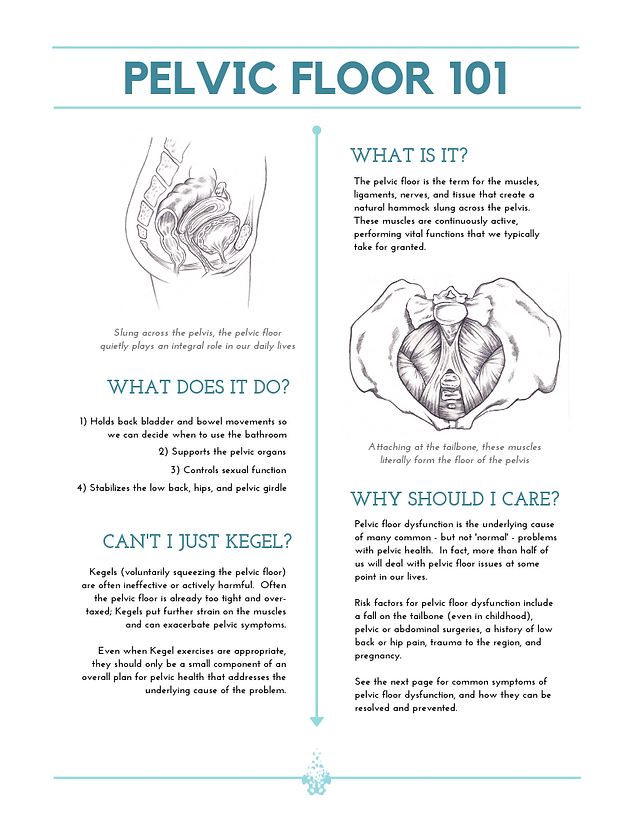
Get comfortable. At first, you may find it easiest to practice lying down. Later on, you'll be able to do them lying down, standing, or even while sitting.
Squeeze the pelvic floor muscles, relax, and repeat. Here are a few different Kegel exercise routines to try:
Long hold. Squeeze your pelvic floor muscles and hold for several seconds. Then relax for a few seconds and repeat. Initially, you may only be able to hold for one or two seconds, but over a few weeks, you'll gradually be able to increase the hold time by a second or two until you can hold for 10 seconds. You can try to do this 10 times in a row, but if this is too hard, start by doing fewer repetitions. As you practice, you might feel the contraction letting go, and that's OK. Just focus on retightening the muscles. Over time, you'll notice the contraction itself becoming stronger, too.
Contract and release. Quickly tighten and relax the pelvic floor muscles several times in a row.

Hold for three, relax for three. Hold the squeeze for three seconds, relax for three seconds, and repeat.
Increase the intensity as your muscles get stronger. It's best to start small and gradually increase the number of repetitions, the duration of each squeeze, and the frequency of daily practice sessions as the muscles get stronger. Read more about when and how often to do Kegels in the next section.
As with all types of exercise, you will need to stick with Kegels and do them correctly to see the best results. Typically, women report noticing better bladder and bowel control after about 6 to 12 weeks. For continued results, make Kegels a permanent part of your daily routine.
When to Do Kegels and How Often
If you are pregnant or have just had a baby, it's best to ask your provider before starting. During pregnancy, you may want to start in the second trimester, which starts at around 14 weeks pregnant. This is when many moms-to-be experience a much-needed energy boost.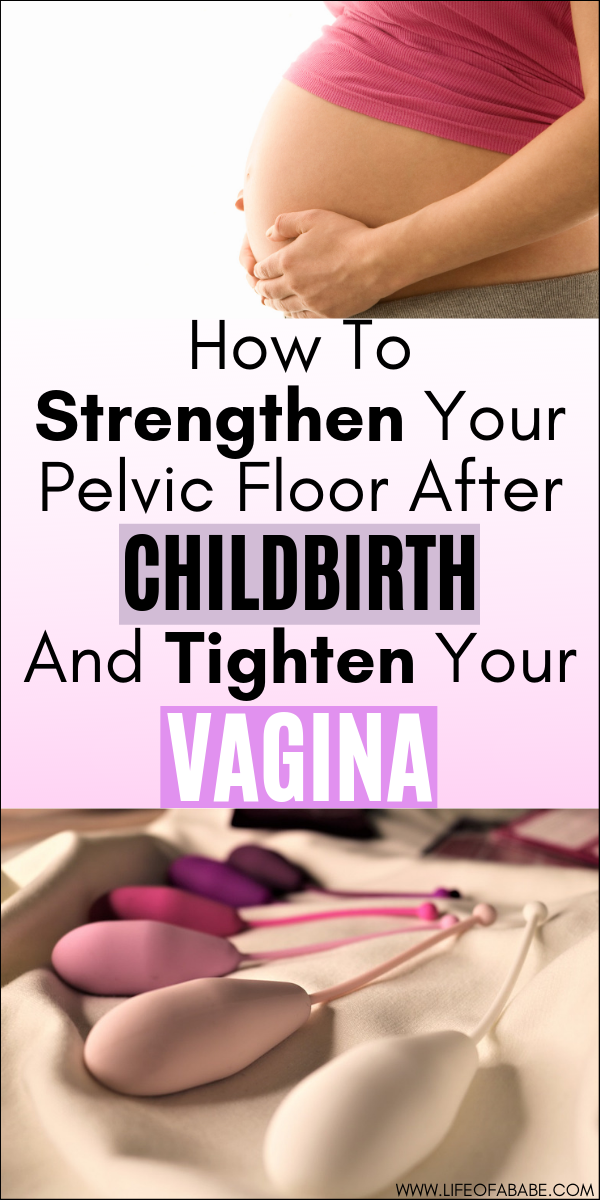 After your baby is born, you may be able to start doing Kegels within a few days of an uncomplicated vaginal birth — just make sure you feel ready. If you had complications during vaginal birth or had a c-section, wait until the doctor gives you the all clear.
After your baby is born, you may be able to start doing Kegels within a few days of an uncomplicated vaginal birth — just make sure you feel ready. If you had complications during vaginal birth or had a c-section, wait until the doctor gives you the all clear.
There is no set rule on how often to do Kegels. Some experts recommend doing Kegels at least twice a week, while others recommend doing them daily. There are many options in terms of how many Kegels to do and how often. For example, your healthcare provider may suggest doing 10 sets of Kegels three times per day; doing 50 squeezes throughout the day; or practicing twice a day before increasing to three times a day. With a little practice, you'll be able to do them while you're relaxing on the couch, waiting in line at the store, or even lying in bed. You can also contract your pelvic floor muscles before and during any situation where you might leak urine, such as when you sneeze or laugh.
Tips for Doing Kegel Exercise
To get the most out of doing your Kegels, keep these tips in mind:
Don't do Kegels while peeing, as this may prevent your bladder from fully emptying.

Don't strain or hold your breath, and keep your abdominal, buttock, and thigh muscles relaxed.
Don't overdo it. After starting to do these exercises, it can be normal to feel some soreness around the pelvic area, but if you feel pain, stop and talk to your doctor.
Doing these exercises regularly is important. If you find yourself forgetting, there are apps you can download that remind you to do your Kegels and guide you through different training sessions.
Some women find contracting the pelvic floor impossible to start with, or they find it tricky to locate the right muscles. Your healthcare provider may recommend biofeedback training, which helps check which muscles are being contracted, or electrical stimulation, which uses painless electric currents to contract the correct muscles.
Kegels are your little secret — no one will ever know when you're working hard on your pelvic floor muscles. But, it can also be great for your overall physical and mental health to do other forms of pregnancy exercise, like prenatal yoga. Anything you do to keep moving and stay fit will help you prepare for motherhood!
Anything you do to keep moving and stay fit will help you prepare for motherhood!
Kegel exercises: What they are and how to do them
BabyCenter selects products based on the research of our editors and the wisdom of parents in the BabyCenter Community. All prices and details are accurate at the time of publication. We may earn a commission from shopping links.
Kegels are simple exercises that involve tightening the muscles of your pelvic floor. Doing Kegels regularly can help prevent incontinence, improve circulation to your pelvic area, and strengthen the muscle tone of your pelvic floor. Start slow with Kegel exercises, then build up to more repetitions a few times a day as your muscles get stronger. If you're experiencing incontinence or pelvic floor pain, ask your healthcare provider for a referral to a physical therapist that specializes in women’s health – they can help you determine what pelvic floor treatments and exercises are best for you.
What are Kegels?
Kegels are exercises you can do to strengthen your pelvic floor muscles – the muscles that support your urethra, bladder, uterus, and rectum.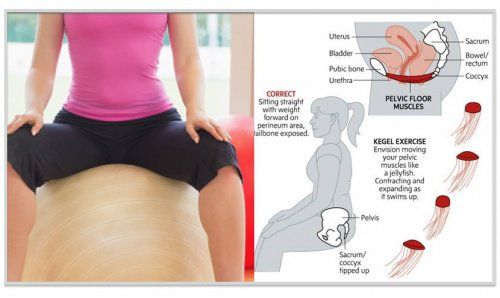
The exercises are named after Arnold Kegel, the gynecologist who first recommended them in the 1940s to help women with urinary incontinence, or diminished bladder control, a problem that affects up to two-thirds of women during pregnancy or after. (Kegel exercises may even reduce the risk of postpartum bowel incontinence, too.)
Kegel exercises are also safe and beneficial to practice while you’re pregnant: They may help keep hemorrhoids at bay and possibly speed healing after an episiotomy or perineal tear during childbirth because they improve circulation to your rectal and vaginal area.
Continuing to do Kegel exercises regularly after giving birth not only helps you maintain bladder control, it also improves the muscle tone of your vagina, making sex after birth more enjoyable.
How to do Kegel exercises
Whether you're pregnant, postpartum, or neither, Kegel exercises are done the same way:
Start with an empty bladder. If you've never done a Kegel before, lie on your back with your knees bent, then pretend that you're trying to stop yourself from passing gas and interrupt the flow of urine at the same time. Or, imagine that you're sitting on a marble and trying to pull it up into your vagina – it's a sensation of squeezing and lifting. (Don't try doing Kegels while you're actually urinating, however.)
Or, imagine that you're sitting on a marble and trying to pull it up into your vagina – it's a sensation of squeezing and lifting. (Don't try doing Kegels while you're actually urinating, however.)
If you're not sure you've got it, you can check by inserting a clean finger into your vagina and then doing a Kegel. If you feel pressure around your finger, you're on the right track. Or try a Kegel while you're having sex or enjoying pleasure. Ask your partner if they can feel the contraction with their finger or penis. If you're doing it correctly, your partner will notice.
Make sure you're squeezing and lifting without pulling in your tummy, squeezing your legs together, tightening your buttocks, or holding your breath – only your pelvic floor muscles should be working. You may have trouble isolating them at first, but it gets easier with practice. It might help to place a hand on your belly while doing Kegels to make sure it stays relaxed.
If you're just starting to do Kegels, begin with “quick flicks,” which involve contracting your pelvic floor muscles in a quick squeeze, then relaxing.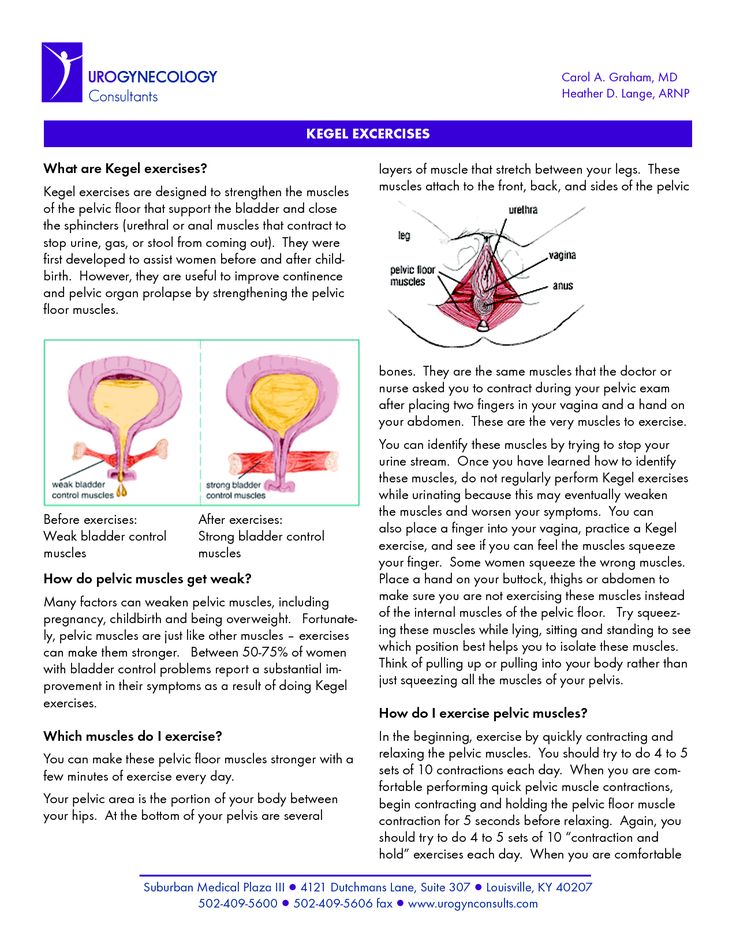 Do ten repetitions of those, working up to 20 repetitions are your muscles get stronger. A second type of Kegel exercises focuses on slowly increasing your pelvic floor contractions for ten seconds, then slowly relaxing your muscles for another ten seconds. Build up to ten or more repetitions of these as you gain strength.
Do ten repetitions of those, working up to 20 repetitions are your muscles get stronger. A second type of Kegel exercises focuses on slowly increasing your pelvic floor contractions for ten seconds, then slowly relaxing your muscles for another ten seconds. Build up to ten or more repetitions of these as you gain strength.
Advertisement | page continues below
If you're suffering from urinary stress incontinence, do a Kegel when you sneeze, cough, or lift something heavy. You may find that it keeps you from leaking.
If you're still not sure if you're doing Kegel exercises correctly, talk to your healthcare provider. They can check to see if you're isolating the right muscles during your next physical exam.
Let your provider know if you feel like you're experiencing pelvic floor dysfunction stemming from pregnancy or childbirth. They can refer you to a pelvic floor therapist or a physical therapist who specializes in women's health, who can asses what's going on and recommend the right course of exercises and treatments for your body. Some providers and therapists have treatments for pelvic floor dysfunction that can effectively help with pelvic floor weakness.
Some providers and therapists have treatments for pelvic floor dysfunction that can effectively help with pelvic floor weakness.
Different types of Kegel exercises to try
The muscles of your pelvic floor can become weakened due to trauma or disuse, but they can also become overworked or tense, just like any other muscle. For that reason, while it’s important to exercise these muscles to tone and strengthen them (such as by practicing traditional Kegels), it’s equally important to learn how to relax or stretch them to avoid pain or tension.
Below, you'll find a few different types of Kegels that can help you strengthen or relax these muscles. They're all provided by Whitney Rogers P.T., D.P.T., O.C.S., who serves as an advisor and consultant to Every Mother. If you’re unsure whether to begin with strengthening or lengthening, reach out to a pelvic floor physical therapist for guidance. Every Mother also offers a free online assessment that can help you get started with therapeutic exercises customized to your individual needs.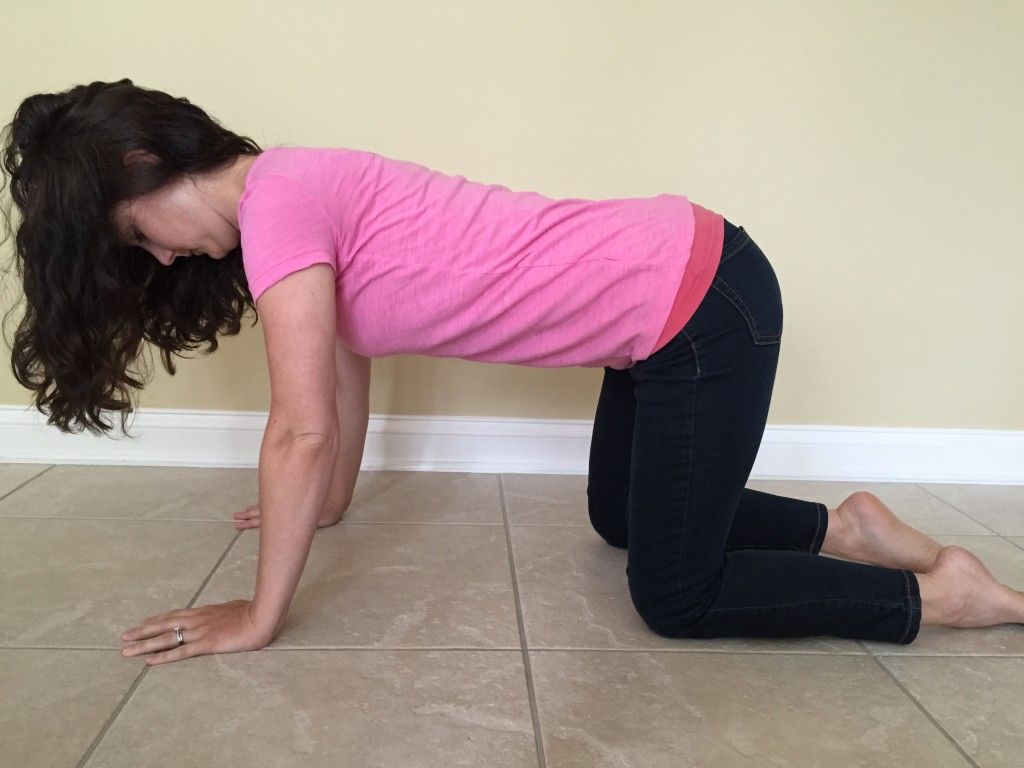
Endurance Kegels
The pelvic floor works to support the pelvic organs and help stabilize the spine during movement. So not only is it important for these muscles to have strength, but also endurance – and long-hold Kegels can help you practice both.
First, something to keep in mind: How long you should hold Kegels for is up for debate. It’s common to work on holding up to 10 seconds, but there is little data to support any specific length of hold. The most important thing is to start with the length you can confidently hold a strong pelvic floor contraction and then make a goal to add about 1 second more.
Instructions:
- Lie on your back and fully relax your belly and pelvic floor. Take a deep breath in and allow your abdomen to expand. As you exhale, purse your lips like you’re blowing through a straw, making the exhale slow and steady.
- When you think you’ve exhaled most of the air, try exhaling more, and contract your pelvic floor muscles like you are trying to hold back gas.
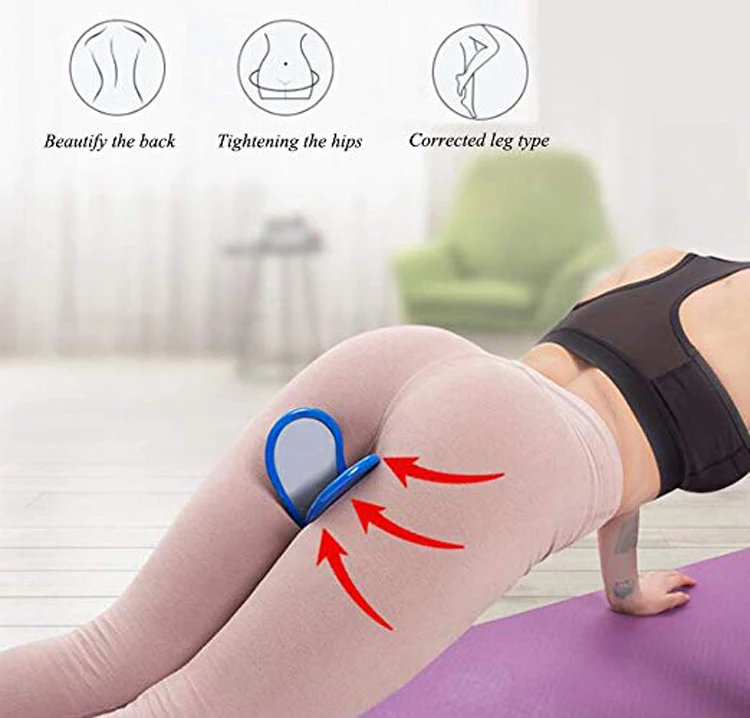 You’ll feel a tightening around your pelvic floor, and you should also feel a lift in your perineum, as if you’re lifting a blueberry with your vagina.
You’ll feel a tightening around your pelvic floor, and you should also feel a lift in your perineum, as if you’re lifting a blueberry with your vagina. - Inhale and fully relax again, then take a few rest breaths to make sure you’re resetting your muscles. Once you have full awareness and control, start the pelvic floor muscle contraction at the beginning of your exhale and count out loud (this is to make sure you aren’t holding your breath!). Figure out the longest hold you can do with an equal amount of strength through the contraction, then challenge yourself to try to hold one second longer.
Practice this for 10 repetitions and perform two to three sets. You can do this one to three times per day while working on building up to 10 seconds.
Quick Flick Kegels
Among women with pelvic floor muscle weakness, a common complaint is experiencing urinary leakage or pelvic pressure when coughing, sneezing, or lifting. In these moments, we want the pelvic floor muscles to contract strongly and briefly – then quickly relax.
Think about this like jumping: When you jump, you need forceful leg contractions repeatedly. In order to help prepare your pelvic floor muscles for these moments, practice “quick flick” Kegels.
Instructions:
- To start, strongly contract your pelvic floor, then relax fully.
- Complete the next contraction once your pelvic floor is completely relaxed. The goal is to improve the speed of your contraction and relaxation so you can perform 10 contractions in about 15 seconds. In the beginning, it’s common for this to be slower, so start where you feel comfortable and work on speed as you gain control.
Perform two to three sets of 10 quick flicks one to three times per day while you work on mastering control. It’s also important to practice these fast contractions when you actually need them, so practice prior to a cough or sneeze, or before lifting something, for example.
Reverse Kegels (pelvic floor relaxation)
Many people forget that the pelvic floor needs to contract and relax.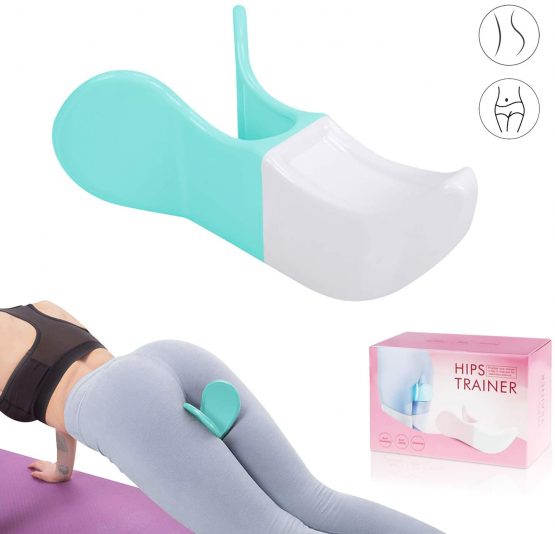 Practicing full pelvic floor muscle relaxation, or a reverse Kegel, may be even more important than strengthening exercises for some people.
Practicing full pelvic floor muscle relaxation, or a reverse Kegel, may be even more important than strengthening exercises for some people.
The best way to learn pelvic floor relaxation is through diaphragmatic breathing, or deep belly breathing. When you perform a deep inhale and allow your diaphragm to descend and your abdomen expand, you should also feel a lengthening or expansion in your pelvic floor.
Instructions:
- Lie on your back. Place your hands on your belly or lower side ribs. As you inhale, feel your belly rising and your low ribs expanding out to the side like an umbrella. As you exhale, feel them return to their resting position (the exhale should be passive).
- Keep your attention on your pelvic floor, and as you inhale, see if you can feel the breath descending down into your pelvis. You may feel an expansion in the area between your sit bones, or into your tailbone.
You can also try reverse Kegels in a deep squat or child’s pose if that’s more comfortable.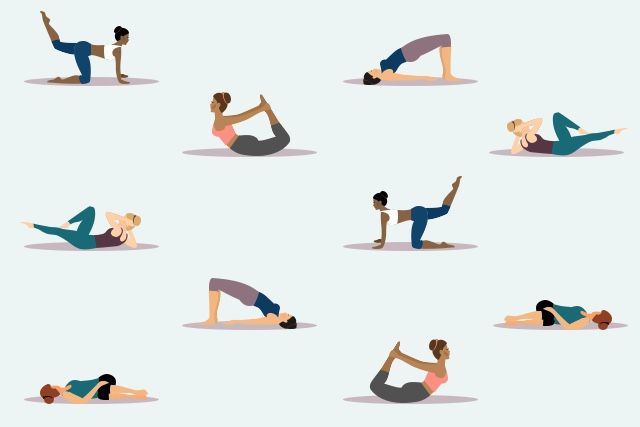 Practice them for 1 to 2 minutes at a time.
Practice them for 1 to 2 minutes at a time.
How often should I do Kegel exercises?
Start by doing a few Kegels at a time throughout the day. As your muscles start to feel stronger, gradually increase both the number of Kegels you do and the length of time you hold each contraction, up to ten seconds. Try to work up to two sets of ten about three times a day. More than that isn't a good idea – overdoing it may lead to straining when you use the bathroom.
Make Kegels part of your daily routine. Once you've got the hang of it, it's easy to incorporate Kegels without having to lie down. For example, you could do a few when you wake up in the morning, more while you're watching TV, and then one last round before you go to bed. But as long as you do them regularly, it really doesn't matter when or where you do them.
Be patient and keep at it. It may take four to six weeks of doing Kegels regularly before you notice an improvement in bladder control.
How long should I continue to do Kegel exercises for?
Don't stop doing Kegels! Continuing the exercise maintains strength and wards off incontinence as you age, so it's a good idea to make Kegels a lifelong habit.
Working to keep your pelvic floor muscles strong may also guard against pelvic organ prolapse, a common condition among older and some postpartum women. In pelvic organ prolapse, weakening pelvic muscles and ligaments can make the uterus, bladder, and rectal tissue sag and protrude into the vagina. This may cause incontinence as well as a sense of pelvic heaviness, lower back pain, and discomfort during sex.
Read more:
Postpartum exercise: When and how to get started
When can I start working out after a c-section?
Diastasis recti
Pelvic floor exercises (Kegel exercises) for men
ShareTime to read: Approximately 2 min.
This information will help you learn how to do pelvic floor exercises (Kegel exercises).
back to top of pageAbout Kegel Exercises
The main purpose of Kegel exercises is to help you strengthen your pelvic floor muscles. These muscles support your bladder and intestines. nine0011
These muscles support your bladder and intestines. nine0011
Kegel exercises will help you:
- Control or prevent urinary incontinence. Incontinence is the leakage of urine and stool (feces) that you cannot control.
- improve your sexual health.
About the pelvic floor muscles
The pelvic floor muscles line the pelvic cavity and support the pelvic organs (see Figure 1). These are the muscles that relax during urination (when you go to the toilet in a small way) and during passing gases or bowel movements (when you go to the toilet in a big way). You also use these muscles to hold urine and prevent leakage. nine0011
Figure 1 Pelvic floor muscles
Pelvic Floor Muscle Test
Pelvic floor muscles must be checked before performing Kegel exercises. Think about what muscles you use to interrupt the stream of urine when urinating, concentrate on them. Don't do this often, as stopping the flow of urine every time you urinate can be harmful.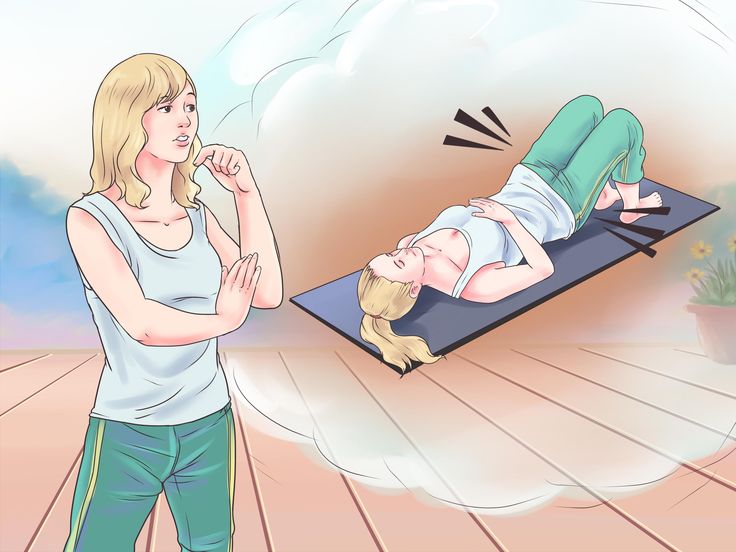
How to Do Kegel Exercises
Make sure you urinate to keep your bladder empty before doing Kegel exercises. nine0011
When you're ready, start doing the following:
- To begin, pull in your pelvic floor muscles and hold them there for 5 seconds. To do this, imagine that you are pulling in and lifting the genitals.
- Don't hold your breath. Counting out loud will keep you from holding your breath.
- After 5 seconds, slowly and completely relax the muscles, holding them in this state for 5 seconds.
- Repeat the exercise 10 times and do it at least 3 times daily. nine0004
Your pelvic floor muscles may become tired during this exercise. In this case, stop doing the exercise and start it later.
This exercise does not involve the abdominal muscles, legs or buttocks. Exercising these muscles will not help you regain urinary control or improve your sexual health.
As you continue with these exercises, gradually increase the amount of time the pelvic floor muscles are contracted and relaxed.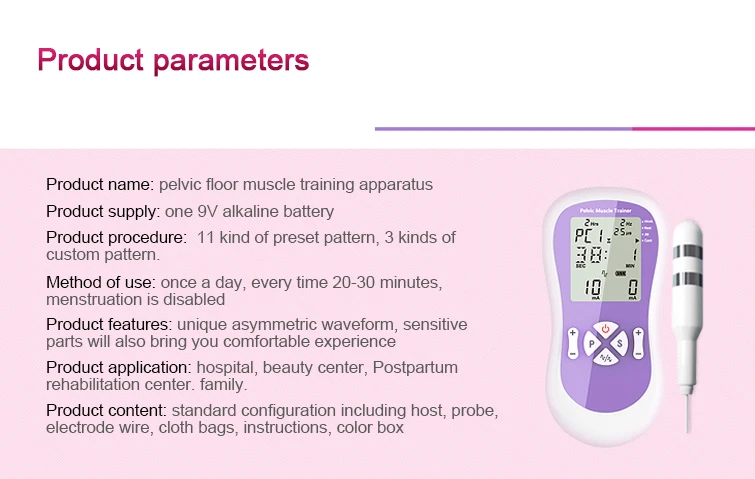 Start with 5 seconds and gradually build up the time each week until you reach 10 seconds. nine0011 back to top of page
Start with 5 seconds and gradually build up the time each week until you reach 10 seconds. nine0011 back to top of page
When to do Kegel exercises
Most people prefer to do Kegel exercises while lying in bed or sitting in a chair. They can be done in any position convenient for you. Doing Kegel exercises while standing can be very helpful, as urine leakage usually occurs in this position.
To prevent leakage of urine, try a Kegel exercise before:
- get up; nine0003 walk;
- go to the toilet;
- sneeze or cough;
- laugh.
Doing these exercises will help you strengthen your pelvic floor muscles and reduce urine leakage.
Do not do Kegel exercises if you have a Foley catheter (thin, flexible tube) in place.
Pain and Kegel exercises
Kegel exercises should not cause pain. Many find them simple and relaxing. But if you use the wrong muscles when doing them, you may experience discomfort.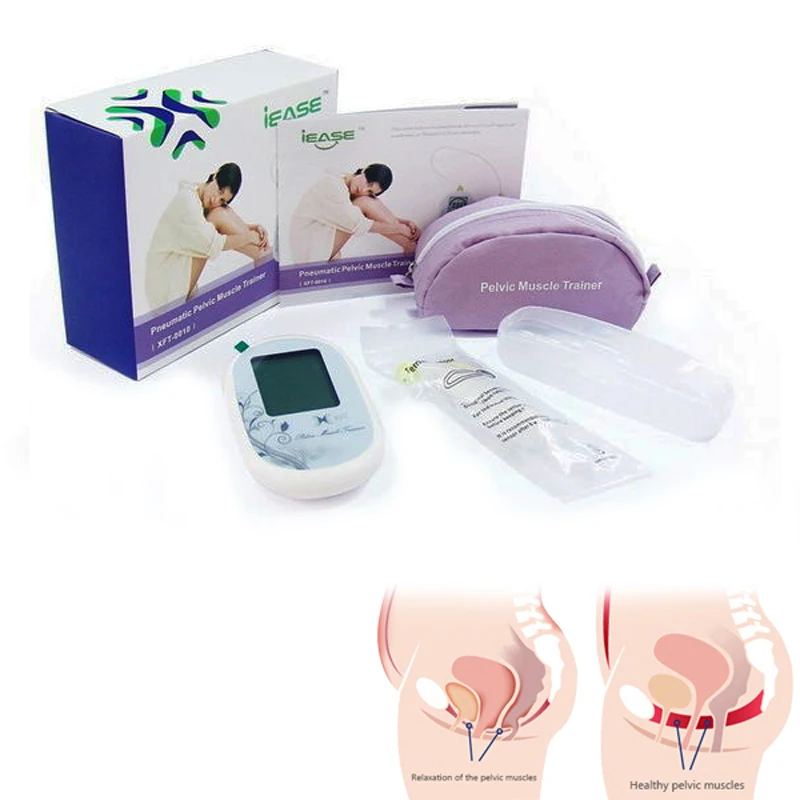 nine0011
nine0011
- If you have back or stomach pain after doing Kegel exercises, you may be using your abdominal or back muscles instead of your pelvic floor muscles.
- If you have a headache after doing Kegel exercises, you may be tightening your chest muscles and holding your breath.
When should you contact your healthcare provider?
Call your healthcare provider if:
- concerns about bowel, bladder, or sexual function;
- difficulty concentrating on the pelvic floor muscles;
- pain when doing Kegel exercises;
- difficulty doing Kegel exercises;
- pain in the pelvic area;
- questions requiring referral to a pelvic physiotherapist.
You must have JavaScript enabled to use this form. nine0011
Share your opinion
Give us your feedback
Your feedback will help us improve the information we provide to patients and caregivers.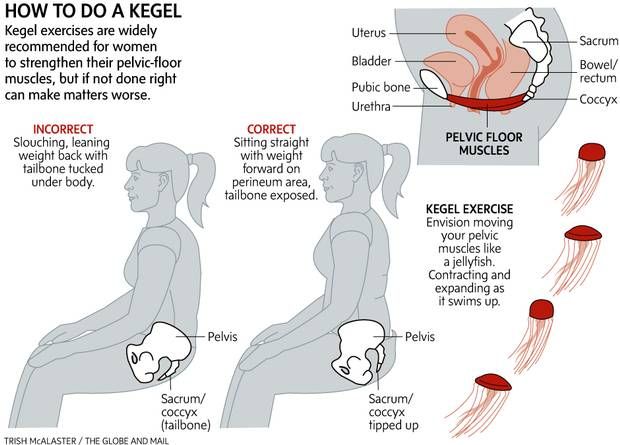
Questions
| Questions | Yes | To some extent | No |
|---|---|---|---|
| Was this information easy for you to understand? | Yes | To some extent | No |
What should be explained in more detail?
Sex after childbirth: training intimate muscles
These muscles are often referred to as the intimate muscles. Well-developed pelvic floor muscles are the key to sexual pleasure: their volume and tone affect the degree of closure of the genital gap and, accordingly, the strength of arousal and orgasm. But very often after pregnancy and childbirth, these muscles weaken and lose their tone.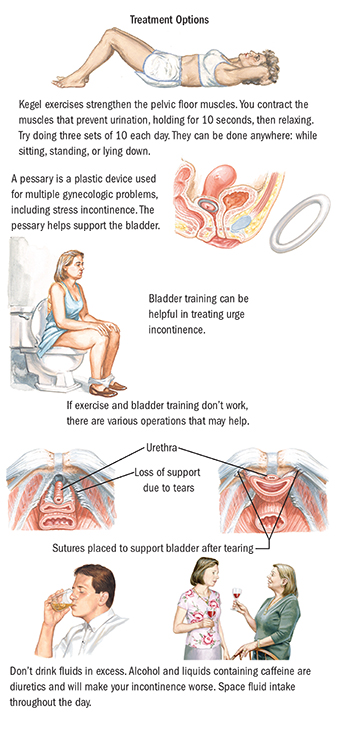 Why is this happening?
Why is this happening?
STOP
“Almost half of the women leave the maternity hospital with weakness of the pelvic floor muscles (and even more if it is a second birth), says gynecologist Elena Silantyeva. - After all, the muscles of the pelvic floor, like all striated muscles, develop only in work, in active movement. But what kind of life do we lead? Most often - sedentary, which is why the muscles are inactive and atrophy. And during childbirth, when the birth canal is stretched, these flaccid muscles are more quickly stretched and injured. For this reason, a woman may experience a syndrome of "wide vagina" (vaginal relaxation). An infection easily penetrates into a wide open genital slit, thrush, colpitis or vaginitis may develop. And close contact of the vaginal mucosa with linen leads to its drying and partial atrophy. It is not surprising that the sensitivity of the mucosa as an erogenous zone is reduced.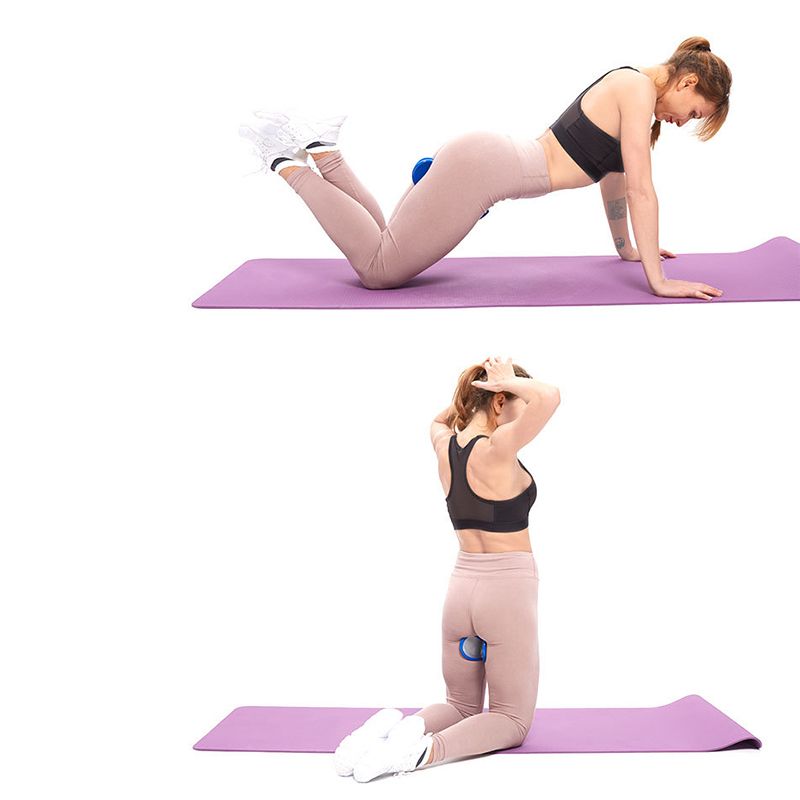 Moreover: during the love act, there is no tight fit of the partner's penis to the inner walls of the vagina. And as a result, not only the woman herself ceases to feel any pleasure during contact, but also the man (especially the elderly one): after all, the strength of his erection largely depends on the degree of fit. nine0011
Moreover: during the love act, there is no tight fit of the partner's penis to the inner walls of the vagina. And as a result, not only the woman herself ceases to feel any pleasure during contact, but also the man (especially the elderly one): after all, the strength of his erection largely depends on the degree of fit. nine0011
HEALING ORGASM
Weak sensitivity of the erogenous zones leads to another serious problem: a woman may experience a pronounced sexual desire, but cannot get an orgasm. And it's pretty bad for her reproductive system. After all, an orgasm not only gives pleasure and provides emotional release, but also supports women's health. “Orgasm causes an instant spasm of the smallest vessels of the arterial bed, blood renewal, an increase in the tone of the venous system,” explains Elena Silantyeva. - If discharge does not occur, then the outflow of venous blood slows down and congestion develops in the vessels of the small pelvis, which manifest themselves later in various painful sensations.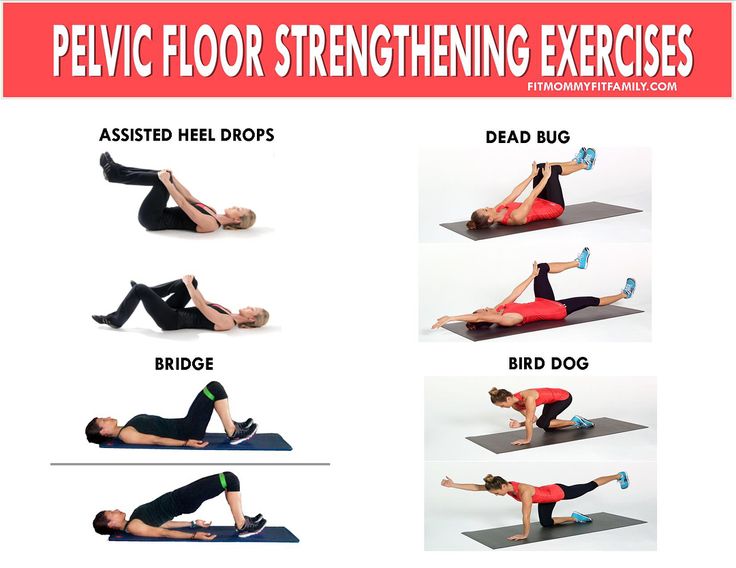 And gynecologists treat these pains with antibiotics, which in turn destroy the microflora of the vagina, and a more serious infection enters the body. Actually, this is another reason to establish a harmonious sex life. nine0011
And gynecologists treat these pains with antibiotics, which in turn destroy the microflora of the vagina, and a more serious infection enters the body. Actually, this is another reason to establish a harmonious sex life. nine0011
INTIMATE MUSCLES TRAINERS
What should a woman do if her pelvic floor muscles have weakened after childbirth and the “wide vagina” syndrome has developed? Elena Silantieva offers several methods.
- Physiotherapy. First of all, immediately after childbirth, in the first day or two, a woman needs restorative treatment using classical types of physiotherapy - a magnetic field, UHF and others that reduce inflammation and quickly heal damaged, stretched muscle tissue. nine0004
- Physical exercise. As soon as the muscles have healed (not earlier than a month after the birth), you can gradually start working with them. But when exactly - only the doctor decides. Any physical activity that has no contraindications is welcome.
 But Pilates, yoga, and physiotherapy exercises, which were so popular in Soviet times, are especially useful - these complexes usually include exercises that at least indirectly involve the muscles of the pelvic floor. nine0009
But Pilates, yoga, and physiotherapy exercises, which were so popular in Soviet times, are especially useful - these complexes usually include exercises that at least indirectly involve the muscles of the pelvic floor. nine0009 - biofeedback therapy. This is a hardware-computer complex, with the help of which women learn to do Kegel exercises, specially designed for training intimate muscles. Of course, these exercises can be done at home, but it is very important to master the correct technique under the supervision of a specialist, because women often confuse muscles and pump the wrong thing at all. If the muscles have not worked for many years, how can you know how these muscles feel, how to put them into work? For this, BOS-therapy is needed. What is its essence? An individual electrode is inserted into the vagina. And when the woman tenses and relaxes the corresponding muscles, the electrode receives an electrical impulse from them, and the data is displayed on the computer screen.
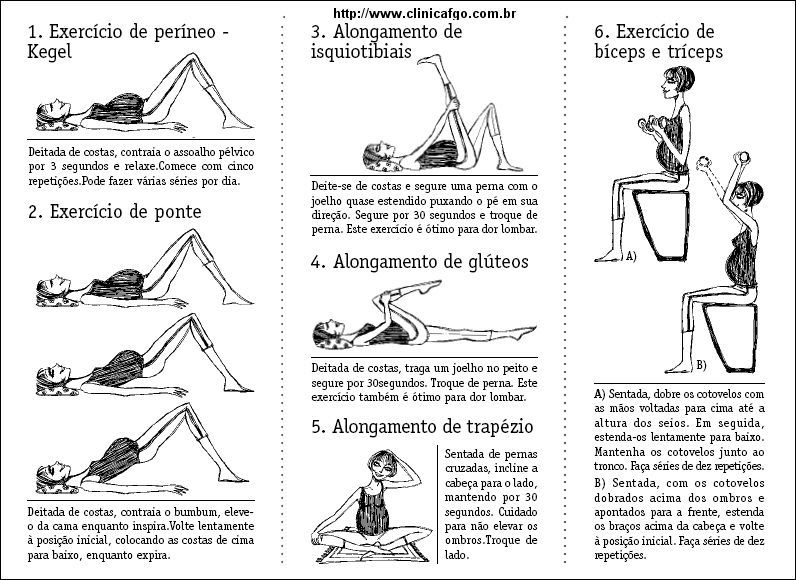 If a woman does not relax her muscles well or by mistake uses the muscles of the anterior abdominal wall, the doctor, looking at the screen, coordinates her work, gradually changing and complicating the task. For 15-20 sessions, you can develop a stable skill in order to continue to practice at home on your own. As a result of such exercises, the volume, strength, endurance of intimate muscles, their ability to relax and stretch increases. There is nothing surprising and mysterious in this: just as a man in the gym, pumping up his biceps, increases their volume, so a woman can double - and this is easily confirmed by ultrasound diagnostics - the volume of her levators (those muscles that lie around the entrance to the vagina) . The genital gap closes and becomes tight, the sensitivity of the erogenous zones is restored. nine0004
If a woman does not relax her muscles well or by mistake uses the muscles of the anterior abdominal wall, the doctor, looking at the screen, coordinates her work, gradually changing and complicating the task. For 15-20 sessions, you can develop a stable skill in order to continue to practice at home on your own. As a result of such exercises, the volume, strength, endurance of intimate muscles, their ability to relax and stretch increases. There is nothing surprising and mysterious in this: just as a man in the gym, pumping up his biceps, increases their volume, so a woman can double - and this is easily confirmed by ultrasound diagnostics - the volume of her levators (those muscles that lie around the entrance to the vagina) . The genital gap closes and becomes tight, the sensitivity of the erogenous zones is restored. nine0004 - Laser vulvo-vaginal rejuvenation and intimate cosmetology (plasmotherapy and mesotherapy) are modern technologies that involve laser exposure or intradermal injections in the intimate area.
